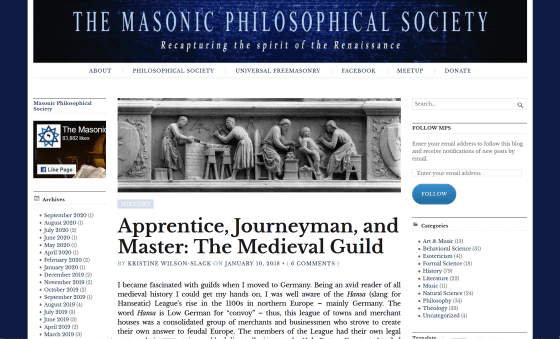What are the differences between classes such as apprentices and masters in medieval European guilds and what is the purpose of the guild?

In the Middle Ages Europe
Apprentice, Journeyman, and Master: The Medieval Guild – MASONIC PHILOSOPHICAL SOCIETY
https://blog.philosophicalsociety.org/2018/01/10/apprentice-journeyman-and-master-the-medieval-guild/

In Europe, where the
That's where the craftsman guild was created, where skilled craftsmen educate their apprentices. Around the time the artisan guild was formed, a guild of merchants was also formed, both monopolizing industry and distribution in a particular region, while maintaining the quality of goods and the standards of trade. Guilds have also worked to promote the interests of their members and have become a force in the government of towns and cities.
The craftsman guild has a strict class system such as apprenticeship, journeyman master, and this shows the skill level as a craftsman. Even today, in some countries, including Germany, Journeymen and Masters are certified as qualifications, and you must pass rigorous exams to qualify as the highest Master.

The lowest class apprentices in the guild are those who work under the master to learn a particular skill / skill. The apprentice studied under the master for a period of time, acquiring skills and techniques both technically and mentally. However, the apprentice was not recognized as an official member of the guild until he met the requirements set by the guild and master. The standardization of technology and the quality of the products maintained and transmitted by the guild were the driving forces that strongly connected the apprentices to the master.
Once the apprentice has gained some training and mastered the skills, he will be promoted to the rank of Journeyman. Journeyman was able to work without being tied to one master, but the former master who educated Journeyman as an apprentice guaranteed Journeyman's personality and abilities. In addition, Journeyman could not hire an apprentice and lived a life of working in the guild to which he belonged and receiving wages.
It seems that the number of masters was very small compared to Journeyman, and there were many craftsmen who spent their entire lives as Journeyman. In order for a Journeyman to be promoted to Master, he must submit a 'masterpiece' to the guild that proves his skills, and has been certified as Master when it is evaluated as suitable for Master.
The craftsman who became the master was able to set up his own workshop and hire and educate his apprentices. The master is a person who can demonstrate high skills as a craftsman under various materials and conditions, and at the same time, he was regarded as a person with wealth and social status.
Wilson-Slack said that the guild's interesting point is that 'the guild's primary purpose was not to produce products or hone its skills on its own, but to'educate apprentices'.' I have listed. Wilson-Slack said that accepting apprentices, communicating techniques and customs, and maintaining product quality, production and tradition was the guild's greatest role, and the guild was also a community servant. ..

Related Posts:
in Note, Posted by log1h_ik







